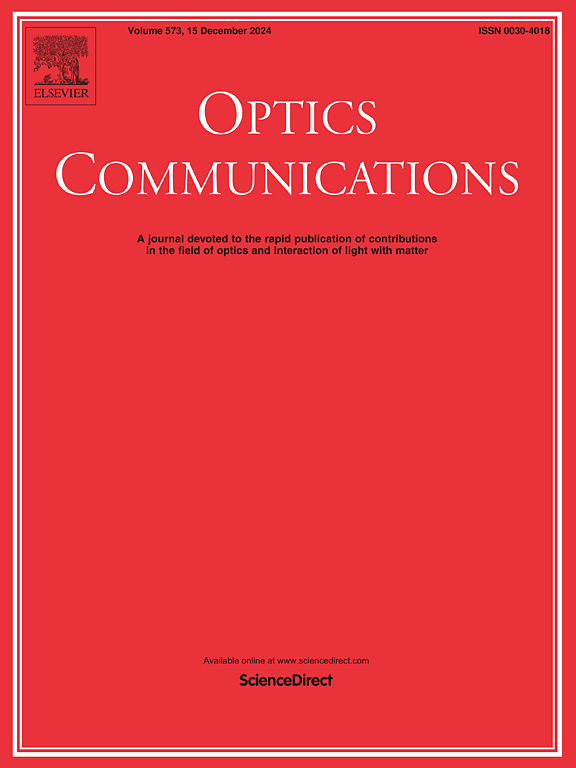Enhanced robustness of high Q-factor chiral metasurface via Brillouin zone folding
IF 2.2
3区 物理与天体物理
Q2 OPTICS
引用次数: 0
Abstract
Chiral structures have broad applications in fields such as biosensing, chemistry, and nonlinear optics. However, in the design of chiral structures, it is also challenging to achieve a high circular dichroism (CD), high Q-factor and high robustness. In our study, we designed a metasurface based on α-Si, by inducting Brillouin zone folding we enhanced the Q-factor of BICs over a broad wavevector range. Specifically, by doubling the period of the unit structure of the metasurface, we enhanced the Q factors over a wide range via Brillouin zone folding. Furthermore, by breaking in-plane and out-of-plane symmetries of the structure, dual narrowband chiral functionalities were achieved. At the two resonance frequencies of 17.4808 THz and 17.4811 THz, CD values reached −0.94 and −0.93, with Q-factors as high as 3.7 × 105, exhibiting strong robustness in both momentum and geometric spaces. Finaly, we investigated the physical mechanisms of CD and high-Q factors through band structure analysis and multipole decomposition. This work provides new insights into the design of chiral optical devices and offers potential benefits for improving the performance of biosensing and nonlinear optical devices.
求助全文
约1分钟内获得全文
求助全文
来源期刊

Optics Communications
物理-光学
CiteScore
5.10
自引率
8.30%
发文量
681
审稿时长
38 days
期刊介绍:
Optics Communications invites original and timely contributions containing new results in various fields of optics and photonics. The journal considers theoretical and experimental research in areas ranging from the fundamental properties of light to technological applications. Topics covered include classical and quantum optics, optical physics and light-matter interactions, lasers, imaging, guided-wave optics and optical information processing. Manuscripts should offer clear evidence of novelty and significance. Papers concentrating on mathematical and computational issues, with limited connection to optics, are not suitable for publication in the Journal. Similarly, small technical advances, or papers concerned only with engineering applications or issues of materials science fall outside the journal scope.
 求助内容:
求助内容: 应助结果提醒方式:
应助结果提醒方式:


